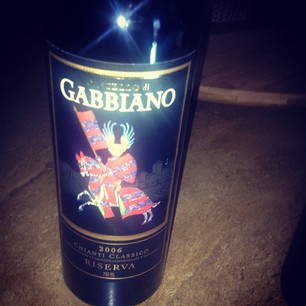I have had some great wines in my lifetime. Most have been memorable of their own accord. But the memories that last forever are when you have a line-up of great friends, great food and great wine, all which match perfectly. The memories of those times are enjoyed forever!
Over the next few weeks, I will be describing each meal, the event that warranted it, the friends involved and the wines, all which made the evening special. But the ranking to make my Top Five all-time wine drinking meals is judged on the wine itself and the wine line-up being truly great. While the friends and food added to the evening, they did not contribute to how that evening ranked – only the wine counted!
In this post, I will provide the event, and the list of wines. In subsequent posts, I will describe the friends and food that matched the wine that made those evenings special. My Top Five evenings (in reverse order) are the following:
#5 evening – My 59th birthday – November 26, 2011, at The Cut Bar & Grill
- 2005 Tyrrell’s Vat 1 Semillon
- 2000 Waverley Estate Chardonnay
- 2000 Houghton Museum Reserve Cabernet Sauvignon
- 2000 McWilliams Mt Pleasant Maurice O’Shea Shiraz
- 1975 Lindemans Porphry
#4 evening – BPAY Architecture and Support team reunion – August 29, 2012, at The Cut Bar & Grill
- 2009 Bouchard Pere & Fils Puligny Montrachet
- 2007 La Belle Voisine Nuits St George
- 1990 Lindemans Limestone Ridge (Cabernet Sauvignon / Shiraz blend)
- 2000 McWilliams Mt Pleasant Maurice O’Shea Shiraz
- 2006 Chateau Reuissec Sauternes
#3 evening – My 58th birthday – December 2, 2010, at The Cut Bar & Grill
- Pommeray Brut Champagne NV
- 1998 Tyrrell’s Vat 9 Shiraz
- 2001 Yalumba Octavius Shiraz
- 1981 Penfolds Grange
- 2005 Château Haut Bergeron Sauternes Dessert wine
- 1997 Château D’Yquem Sauternes
#2 evening – Deanna’s 41th birthday – March 17, 2012, at home with Jay Huxley Masterchef cooking
- 1998 Pommeray Louise Champagne
- 2009 Hugel Alsace Riesling
- 1990 Waverley Estate Semillon
- 2007 La Belle Voisine Nuits St George
- 2005 Chateau Brane-Cantenac (Margeaux)
- 2005 Château Haut Bergeron Sauternes
- 1997 Château D’Yquem Sauternes
#1 evening – Deanna’s 40th birthday – March 19, 2011, at Lindemans Winery
- 1998 Pommeray Louise Champagne
- 1987 Lindemans Padthaway Watervale Riesling
- 1990 Waverley Estate Semillon
- 1996 Wolf Blass Grey Label (Cabernet Sauvignon / Shiraz)
- 1996 Lindemans St George Cabernet Savignon
- 1995 Yarra Yering Dry #1
- 1971 Lindemans Limestone Ridge (Cabernet Sauvignon / Shiraz)
- 1971 Penfolds Grange
- 1971 Château D’Yquem Sauternes
- 1957 Lindemans Vintage Port
While we have had some evenings (such as our anniversaries) where the wines have been just as spectacular, they were limited to two bottles. What made the Top Five truly stand out was that we had more friends and more wines to sample, enjoy and compare.
I am actually not sure if I can write about the great time we had for Deanna’s 40th birthday without passing out as just writing up the list has me quivering! I am uncertain if we will ever be able to top that evening, but my 60th birthday is coming up in a few months, so we do have a reason to try! Hopefully, I can use that night to knock off the current #5 and possibly reposition a few of the other four spots!









